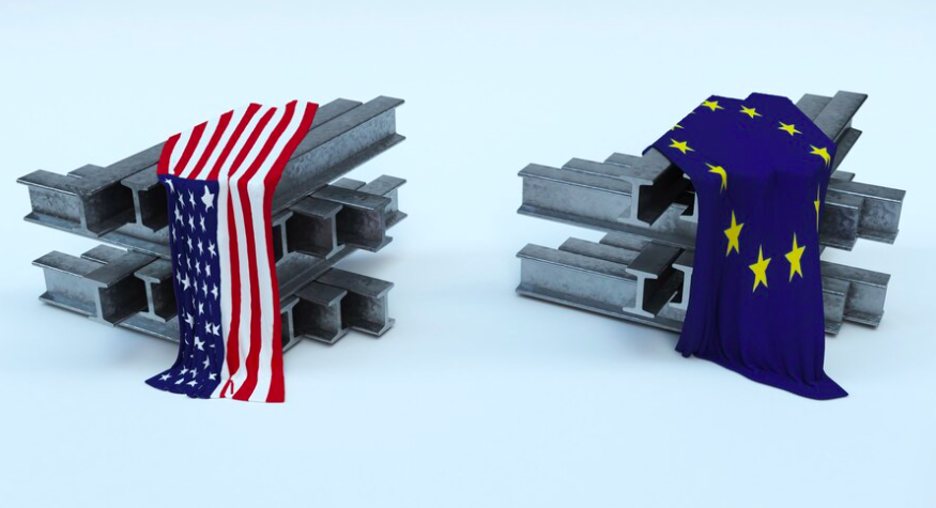The European Union’s Green Deal Plan lacks administrative speed and simplicity in matching the incentives for clean-tech businesses compared to the United State’s Inflation Reduction Act. Despite their competitiveness for tax profits, the parties will collaborate to reduce dependency on China and its dominant position in the supply of critical materials necessary for the green transition.
What is happening?
In February 2023, the European Union presented the Green Deal Industry Plan to counter the United States Inflation Reduction Act (IRA) which threatens to drive clean-tech companies out of Europe to the United States. To receive IRA’s green tax benefits, companies must produce on American soil with an American workforce. The Green Deal aims to incentivize clean-tech businesses to build their products within the EU, by allowing member states to match the aid offered elsewhere for the initial investments into “targeted” sectors relevant to the net-zero transition. EU members can also provide funding to motivate a company to locate the investment in Europe. Overall, the European strategy and the IRA are quite different. Rather than relying on massive tax credits and trade barriers, the Green Deal enforces higher carbon taxes and a preference for free trade. While the European strategy focuses on innovation and international cooperation, the IRA focuses on the mass deployment of green technologies.
What is causing it?
While the IRA was welcomed as an important piece of international climate legislation, many countries claim that its local content requirement rule (LCR) discriminates against their companies. One aspect of the LCR has drawn opposition globally and states that at least 40% of critical minerals in an electric vehicle battery must come from the United States or their free trade partner, and at least 50% of the battery must have North American content. The European Union, Japan, South Korea, India, and the United Kingdom have all accused the rule of violating the World Trade Organization’s (WTO) rules, saying that the IRA’s policy is protectionist and harms their country’s competitiveness.
In light of the issues with local content requirements, the United States signed an agreement with Japan in March 2023, which prohibits either party to impose restrictions on imports of critical minerals for the clean energy transition. In June 2023, the European Commission announced progress in talks with the United States over free trade for critical minerals.
What could happen next?
With the Green Deal, EU members won’t lack public funding to match the IRA for the green transition. Although, the IRA’s incentives are more appealing because their policies are simpler and the administrative procedures are faster. The EU’s process is hindered by insufficient infrastructure among most of its members. To effectively execute their plan, the cross-border infrastructure needs to be accelerated in the coming years. Faster procedures and rapidly expanding energy infrastructure represent a competitive advantage of the IRA’s climate law compared to the EU’s. As EU countries continue to develop energy infrastructure, they are likely to turn to American companies that have experience building them.
The transition to low-carbon energy is expected to quadruple the demand for critical materials most notably copper, nickel, cobalt, and lithium by 2040. An electric car is estimated to require six times more the amount of mineral inputs than a gas car, while an onshore wind plant requires nine times more mineral inputs than a gas plant. Meeting the demand will pose challenges in responsible sourcing critical materials due to environmental, social, and climate risks. China currently dominates at every stage of the EV battery supply chain downstream of mining, according to the International Energy Agency. Due to the increasing demand and China’s domination, the United States is highly likely to collaborate with partners in Europe and Asia to ensure stable supply chains.
Reducing dependency on China for critical materials is likely to be challenging due to political challenges for mining development, limited investment in mineral refining and smelting, and limited cell component and battery manufacturing capacities. Overcoming these issues will require comprehensive mapping efforts by governments to find the right location for new mining and refinery facilities, overcoming geopolitical obstacles, and substantial investment in new infrastructure. However, China’s rare earth materials industry is having issues with securing enough to support the transition. Rare earth elements are essential for magnets used in electric vehicles’ motors and wind turbines. Estimates say that China currently has less than 20% of the world’s rare earth natural resources but processes over 85% of its global reserves. China’s foreign dependency on rare materials hurts its position, and its government has allegedly funded cyber campaigns to spread misinformation about the Canadian rare earths company Appia. Canada has some of the largest reserves of rare earths in the world and represents a crucial partner for the United States and its goal of decreasing dependency on China. There are around 13 active rare earths projects in Canada which suffers from long approval for mining projects. Mining projects in Canada can take from five to 25 years to become operational, which suggests that it will be at least a couple of years before the United States can loosen its supply chains from China.
McKinsey & Company. (2022). The energy transition: A region-by-region agenda for near-term action.
Sources:
- United Nations Trade and Development – https://investmentpolicy.unctad.org/investment-policy-monitor/measures/4004/-369-billion-in-investment-incentives-to-address-energy-security-and-climate-change-#:~:text=The%20law%20includes%20about%20369,of%20clean%20energy%20production%20and
- Council on Economic Policies – https://www.cepweb.org/inflation-reduction-act-vs-green-deal-transatlantic-divergences-on-the-energy-transition/
- The European Parliament –https://www.europarl.europa.eu/RegData/etudes/IDAN/2023/740087/IPOL_IDA(2023)740087_EN.pdf
- Atlantic Council – https://www.atlanticcouncil.org/blogs/energysource/clean-industrial-policies-a-space-for-eu-us-collaboration/
- The White House – https://www.whitehouse.gov/cleanenergy/inflation-reduction-act-guidebook/
- Peterson Institute for International Economics – https://www.piie.com/blogs/realtime-economics/us-eu-race-green-subsidies-can-help-fight-climate-change
- Time – https://time.com/6247230/inflation-reduction-act-global-response-climate-trade-protectionsim/
- Office of the United States Trade Representative – https://ustr.gov/about-us/policy-offices/press-office/press-releases/2023/march/united-states-and-japan-sign-critical-minerals-agreement


